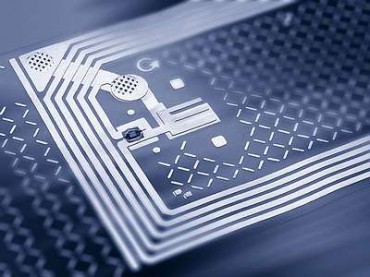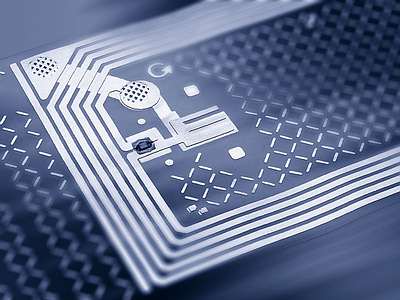Joseph Candel
 Can you imagine a world in which any store, restaurant, or other business you enter is able to identify you, make note of what you’re wearing, and even detect how much money you have in your wallet? Science fiction?–Not for long! Believe it or not, one day soon radio frequency identification (RFID) technology could be identifying, screening, and tracking us all.
Can you imagine a world in which any store, restaurant, or other business you enter is able to identify you, make note of what you’re wearing, and even detect how much money you have in your wallet? Science fiction?–Not for long! Believe it or not, one day soon radio frequency identification (RFID) technology could be identifying, screening, and tracking us all.
RFID “tags” use radio frequencies to transmit a code that uniquely identifies the tag. The silicon chips that hold RFID tags–some no bigger than a grain of salt–are small enough that they could be placed in clothing, razor blades, library books, and even currency.
RFID readers within 15 or 20 feet of some tags can pick up their signals. Global databases will let businesses keep track of every location where an RFID signal has been read.
How might the tags identify you? If, for example, you buy a sweater using a credit card, your name could be forever linked with that particular item of clothing.
That’s what worries privacy advocates–the ease with which companies can read the tags and keep logs, identifying and profiling consumers long after the tagged products those consumers bought leave the store. Privacy advocates and civil libertarians also say the technology designed for tracking clothing items at a very short range can easily be adapted to tracking and spying on people, just as software “cookies” now track computer users’ movements online.
With little public fanfare, this new RFID technology is rolling out on a massive scale. Alien Technology, an RFID tag maker, projects that within three years the company will sell 10 billion RFID tags a year, and that the cost of a single tag will drop below US$0.05–cheap enough that they may start to appear in most products. Wal-Mart, the world largest retailer, has mandated the use of the RFID tagging by its suppliers on all their products by 2005, and many other large retail outfits are expected to follow Wal-Mart’s lead.
Another technology to keep an eye on is the new Electronic Product Code (EPC). Hailed as the next-generation product code system, EPC could someday replace with a microchip the bar code (Universal Product Code, or UPC) found on most merchandise today.
Whereas bar codes only identify groups of products, the EPC is designed to provide a unique serial number for every item in the system. For example, at present all cans of Coke produced at a certain bottling plant or within a certain country have the same bar code. Under EPC, each and every bottle or can of Coke would have its own unique identifier. Impossible, you say? The EPC is built around a 96-bit format that is large enough to generate a unique code for every grain of rice on the planet.
Privacy advocates and civil libertarians say the technology designed for tracking clothing items can easily be adapted to tracking and spying on people.
Retailers and manufacturers think a one-of-a-kind product code could help reduce theft and counterfeit goods, and simplify the inventory process.
The way it’s been designed, an EPC can be linked to databases that can store far more information about a particular product than is possible with the current bar code system. In addition to the basic information provided by UPC-item, price, and manufacturer–the EPC could link to information about the buyer and location of the item based on a complex system of microchip tags and microchip readers that communicate via radio frequency (RFID).
And RFID tags aren’t just for goods found in supermarkets and malls. Applied Digital Solutions (ADS) of Palm Beach, Florida, is hoping that Americans can be persuaded to implant RFID chips under their skin to identify themselves when going to a cash machine or in place of using a credit card. The surgical procedure, which is performed with local anesthetic, embeds a 12-by-2 mm RFID tag in the flesh of a human arm. ADS even ran a special promotion urging Americans to “get chipped.” The first 100,000 people to sign up were offered a $50 discount.
And why shouldn’t you get chipped? That way you could simply walk into a store, pick up the items you want, stroll through the reader on your way out of the store, and the cost of the items would automatically be charged to your credit account. Not only that, but all the information regarding your purchases would be beamed to the manufacturers, who would be ever so happy to send you special offers on future purchases, or even to stock you up on their products at prearranged times, billing you automatically.
The system would also put an end to shoplifting and other forms of theft and fraud, as there would be no cash or credit cards to steal and every item would be linked to its rightful owner. There would be far fewer criminals and drug dealers (again, no cash), and society would be much better off.–Or would it? It seems benign–even beneficial–but what about its potential to track your every physical and financial move?
The new technology is preparing the public, and it won’t be long till the mother of all silicon chips is ready for its debut–the mark of the Beast, as predicted in the Bible. “He [the False Prophet, top minister in the Antichrist’s government] causes all, both small and great, rich and poor, free and slave, to receive a mark on [or ‘in’] their right hand or on their foreheads, and that no one may buy or sell except one who has the mark or the name of the Beast [the Antichrist], or the number of his name. Here is wisdom. Let him who has understanding calculate the number of the Beast, for it is the number of a man: His number is 666” (Revelation 13:16-18).
When the mark of the Beast comes, don’t be duped into taking it!




